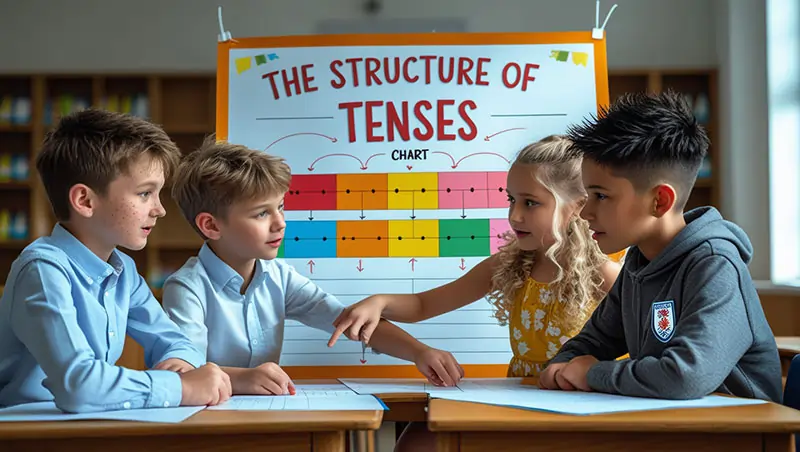Decoding English Grammar: The Structure of Tenses Chart Explained
As aspirants ready for government competitive tests must have a strong command of English grammar. Correct sentence structure depends much on English grammar, so improving written and spoken communication. Strong knowledge of tenses helps candidates to apply grammar rules precisely, so enhancing their general language competency.
Learning the structure of a tense chart provides a systematic approach to learning different verb tenses. Along with their features, it is a good tool for remembering and arranging several tenses—past, present, and future. Referring to a structured tense chart helps aspirants for the competitive exams to minimize uncertainty and ease revision. The principles of tenses and the need of a tense chart in grammar learning will be discussed in this post.
Importance of Tense Chart in Exam Preparation
One good tool for methodically organizing and remembering several verb forms is a tense chart. By offering a visual breakdown of several tenses—including past, present, and future tenses with their aspects—it helps one learn. Referring to a tense chart helps aspirants for the competitive exams to rapidly review and reduces uncertainty during preparation.
The chart clarifies verb forms and guides one in knowing their proper usage in various sentence construction. Frequent use of this tool increases grammatical accuracy and confidence in handling grammar-related questions.
Three Main Tenses and Their Functions
Three main tenses—past, present, and future—rule English grammar. Every one of these tenses has different purposes in explaining when an action takes place:
- Past Tense: Lists past actions including past habits and finished events. She finished her homework yesterday, for instance.
- Present Tense: Present tense refers to general truths or current actions. The Earth, for instance, revolves around the Sun.
- Future Tense: Usually employing auxiliary verbs like “will” or “shall,” this indicates actions that will take place later. He will, for instance, show up for the test tomorrow.
These tenses each have four further divisions: simple, continuous, perfect, and perfect continuous. These differences add more clarity to the nature and timing of an action.
The Simple Tense and Its Role in Exam Preparation
Facts, habits, and finished actions are expressed in simple tense without regard to their frequency or duration.
- Simple Past: States finished actions. She correctly answered every question, for instance.
- Simple Present: Indices universal truths and habitual behavior. For instance: a year consists of twelve months.
- Simple Future: Describes intended future activities or plans. For instance, they will report the findings next week.
Competitive tests often include this tense, which candidates must apply precisely in sentence corrections and fill-in-the-blanks activities.
Understanding the Continuous Tense for Sentence Construction
Ongoing activities are characterized by the continuous tense, sometimes known as the progressive tense. It is constructed with the auxiliary verb “to be” then the main verb in “-ing” form.
- Past Continuous: Details events occurring at a particular instant in the past. For instance, she was writing the essay when the bell rang.
- Present Continuous: Shows actions occurring right at the moment of speaking. He is for example getting ready for his test.
- Future Continuous: Describes activities anticipated to be under progress in a future time. For instance, they have the seminar next week.
In sentence transformation and comprehension activities, candidates have to be able to identify and apply continuous tenses properly.
The Perfect Tense and Its Role in Competitive Exams
Indicating the link between many time periods requires the perfect tense. It is produced with the past participle of the main verb combined with the auxiliary verb “have”.
- Past Perfect: Tells of an action finished prior to another. She had completed the test before the timer stopped, for instance.
- Present Perfect: References past events or lately finished tasks. He has tried the mock test twice, for instance.
- Future Perfect: Describes the action one will take before a designated future point. For instance, they will have gone over the course by next month.
Questions on competitive tests sometimes test knowledge of perfect tenses in sections on error detection and sentence completion.
Knowing the framework of a tense chart offers a methodical way to pick up English tenses. Understanding and using grammar rules can be done methodically with a tense chart. Government candidates for the exams can increase their fluency and accuracy in English grammar by means of constant practice and appropriate study strategies. Making use of tools like the tense chart PDF helps to improve grammar-related section performance and simplifies exam preparation.



